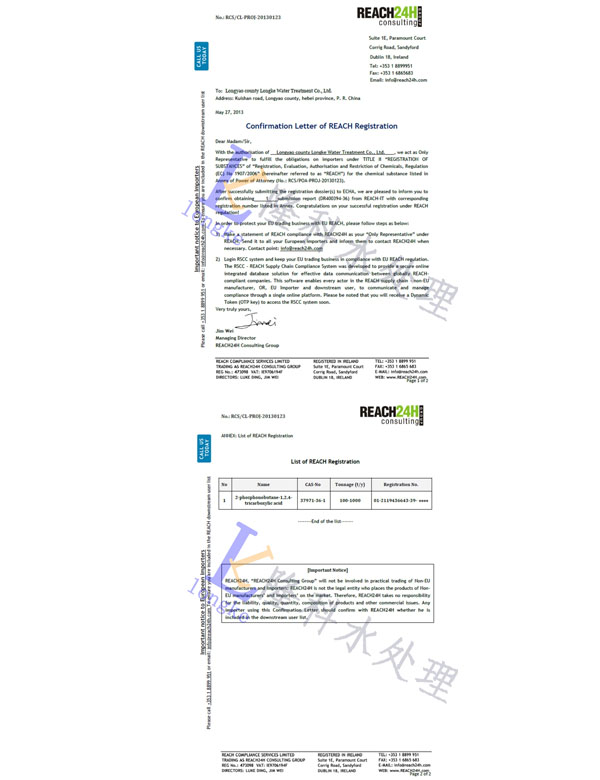Exploring Different Types of Flocculants and Their Applications in Water Treatment
Understanding Flocculant Types A Comprehensive Overview
Flocculants are essential agents widely used in various industries to promote the aggregation of suspended particles in liquids. Their primary role is to facilitate the flocculation process, where fine particulates clump together to form larger aggregates, or flocs, which can then be easily removed from the liquid phase. This process is crucial in wastewater treatment, water purification, and other industrial applications. In this article, we will explore the different types of flocculants, their mechanisms of action, and their applications.
Types of Flocculants
Flocculants can be classified into several categories based on their chemical nature. The main types include synthetic organic flocculants, natural flocculants, and inorganic flocculants.
1. Synthetic Organic Flocculants These are man-made polymers that are often highly effective in promoting flocculation. Common examples include polyacrylamide (PAM) and its derivatives. These synthetic flocculants are favored for their ability to create strong and stable flocs, which can be crucial for industries dealing with fine particles. Synthetic flocculants can be cationic, anionic, or non-ionic, depending on their charge properties. Cationic flocculants possess a positive charge, making them effective for treating negatively charged particles, while anionic flocculants are best for positively charged particles.
2. Natural Flocculants Unlike their synthetic counterparts, natural flocculants are derived from natural sources. Examples include chitosan, starch, and seaweed extracts. These flocculants are less toxic and more environmentally friendly, making them an appealing choice for industries concerned with ecological sustainability. They work effectively in various conditions and are often used in food processing, bioremediation, and wastewater treatment.
3. Inorganic Flocculants This category comprises metal salts, such as aluminum sulfate (alum) and ferric chloride. Inorganic flocculants are commonly used in municipal water treatment processes due to their cost-effectiveness and efficiency. They destabilize colloidal particles in water, causing them to aggregate and settle out. While these flocculants are effective, they can introduce residual metals into the effluent, necessitating careful management in wastewater applications.
flocculant types

Mechanisms of Action
The mechanism by which flocculants induce flocculation involves several steps. Initially, the flocculant molecules neutralize the surface charges of the suspended particles, which are normally stable due to electrostatic repulsion. Once the charges are neutralized, the particles can come together and form larger aggregates. The polymer chains in synthetic flocculants can also bridge between particles, enhancing the aggregation process and leading to the formation of larger flocs.
Applications of Flocculants
Flocculants find applications in a wide range of industries. In municipal water treatment, they are crucial for clarifying water by removing suspended solids and pathogens. They also play a significant role in industrial wastewater treatment, where they help to separate contaminants from water before it is discharged or reused.
In the mining industry, flocculants are used to separate valuable minerals from waste material, improving the overall efficiency of the extraction process. In the food industry, they assist in processes like juice clarification and wine production, ensuring high clarity and quality of the final products.
Conclusion
The choice of flocculant depends on the specific application and the nature of the particles involved. Understanding the different types of flocculants, their mechanisms of action, and their applications is vital for optimizing processes in water treatment, food production, and industrial operations. As industries increasingly focus on sustainability and environmental impact, the development of more biodegradable and eco-friendly flocculants will play an essential role in the future of these processes. By leveraging the right flocculant, industries can enhance efficiency, reduce costs, and minimize their ecological footprint, paving the way for more sustainable practices.
-
Pbtc Scale InhibitorPBTC: A Scale Protector for Industrial Water TreatmentNewsAug.05,2025
-
Organic Phosphonate: An Efficient Defender in the Field of Scale InhibitionNewsAug.05,2025
-
Hydrolyzed Polymaleic Anhydride: Green Pioneer in Scale Inhibition FieldNewsAug.05,2025
-
PAPEMP Polyamino Polyether Methylene Phosphonic Acid For SaleNewsAug.05,2025
-
Flocculant Water Treatment: A Pioneer in Purification in the Field of Water TreatmentNewsAug.05,2025
-
Benzyl Isothiazolinone: An Efficient and Broad-Spectrum Antibacterial Protective GuardNewsAug.05,2025





